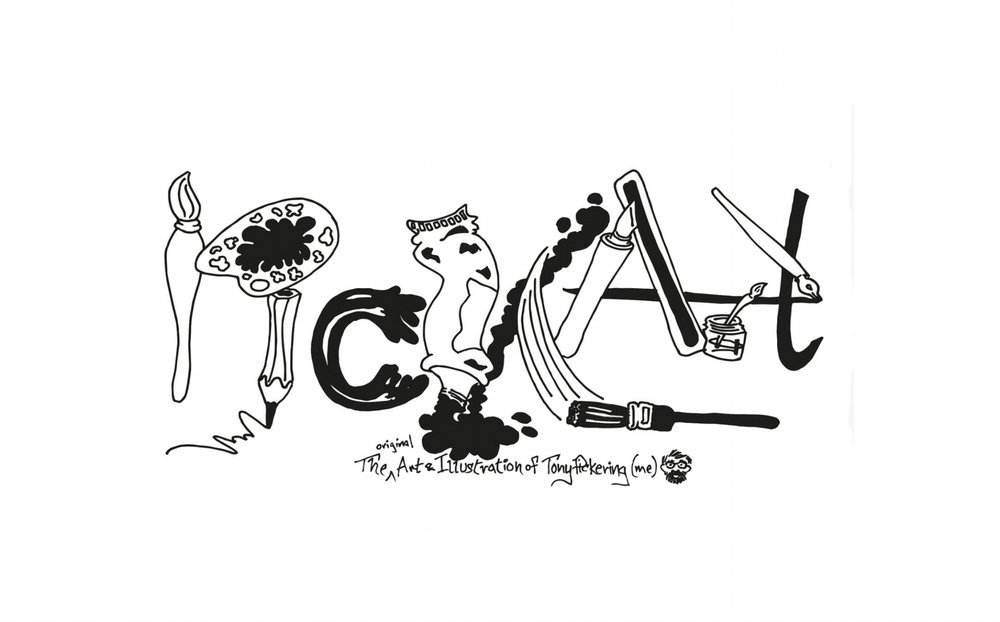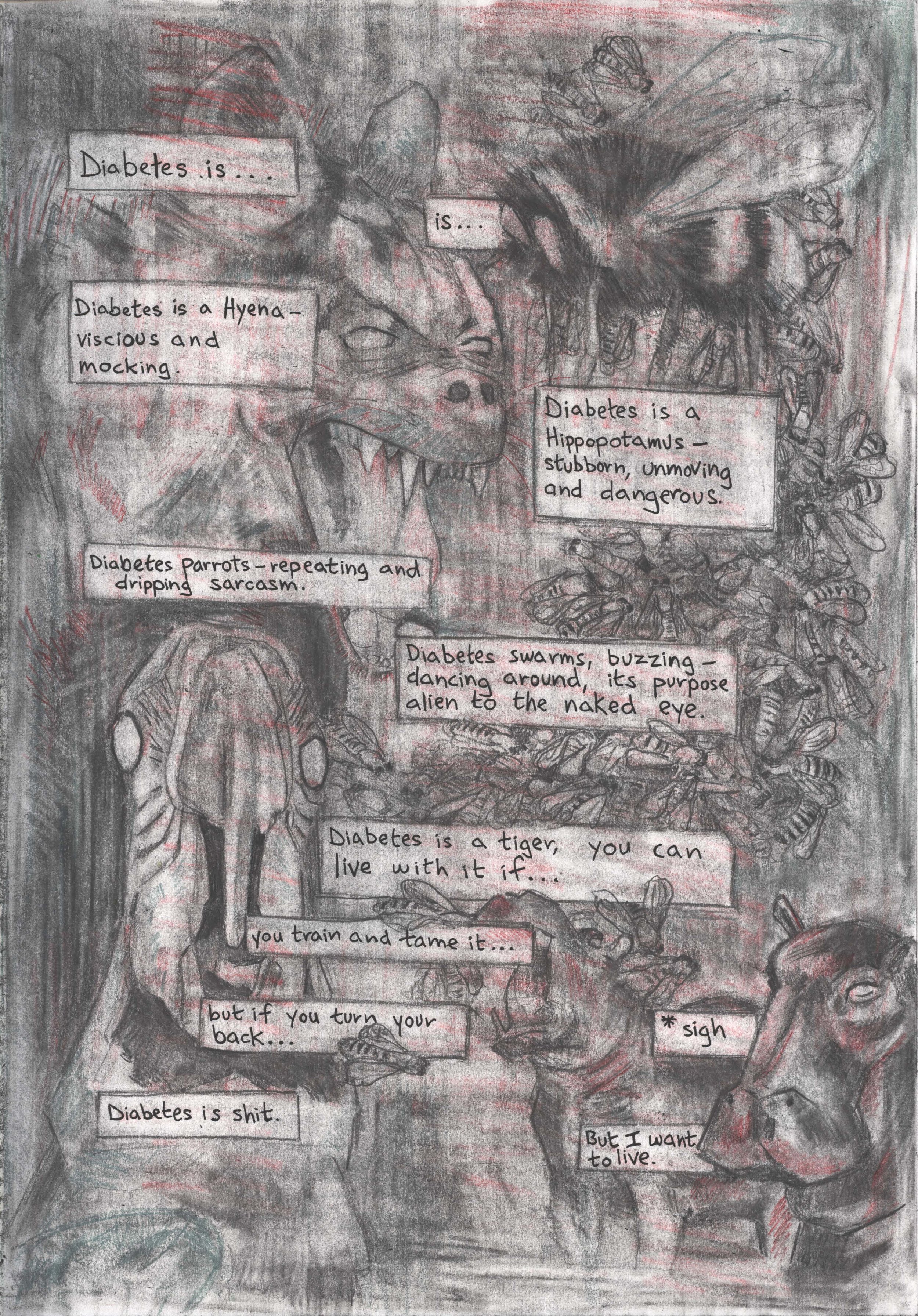I pick it up. The book is heavy in my hand. It has a weight, a presence, that gives me great satisfaction. The smoothness of the cover, the flick of the pages, it all sits, and signifies. With the comic now a book - a graphic novel (and from there a graphic pathography), the ethereal settles into being. A block of time and imagination that has now become a thing, an object - a product?
Diabetes: Year One. 2018, by y’know, me.
Diabetes: Year One took up two years to conceptualise, procrastinate and realise. It took diagnosis with a chronic illness, a lot of confusion, drugs trials and squeezing through academic study and research (see my SciArt blogs to see how it started); and now that it’s done I’m really proud of it! But there is much about it, about me and about my process and how it has developed other work I should reflect on (and I really need to get this blog going again) - so here goes.
The comic - or “Comics” is a medium that takes different forms - words, pictures, sounds, design, stories, symbols and so on, and puts them side by side, splits them apart, then over and underlaps them and lets the reader put them together; but I didn’t know that when I started! I mean I had an inkling, I’ve read comics, graphic novels or whatever for years, but when I found myself saying I should do a graphic novel about type one diabetes I didn’t know where to begin.
My first thoughts were a miasma of research and experience that kept floating out of reach. Words and images - fragments of prose that became poetry and doodles that began to outline illustrations. With this in my head I sat down in front of the most dangerous of foes, the blank page.
I hate this bit, there’s so much potential to get it wrong - even when you don’t know what it is you’re about to mess up, so really shouldn’t be able to mess it up, all I can think of is how I’ll mess it up! And this is both silly, and, more annoyingly, fucking frustrating! As a result I harness all my well stored anger management issues and invariably just try to draw or do something - expecting it to be bad, but hoping it just might have something.
My first, unused page.
My first page was confused (see) - when it was finished I wasn’t sure what I’d meant or what I’d said! But I had proved I could design, draw and write a page. I began to grasp hold of a process - writing alongside the drawing, a grid to organise the page (even if by the end I only used the grid to ignore it), and layering pencils to build up Images, or to excavate them with a rubber.
There was lots more I was to develop: at this point I had fragments not a structure, I hadn’t learnt to love thumbnails or appreciate the gutter and the panel, I didn’t really know I was entering the world of graphic medicine, and I hadn’t realised how much this work of imagination would be a work of ongoing research. But these are for future blogs, for now, I had begun.


